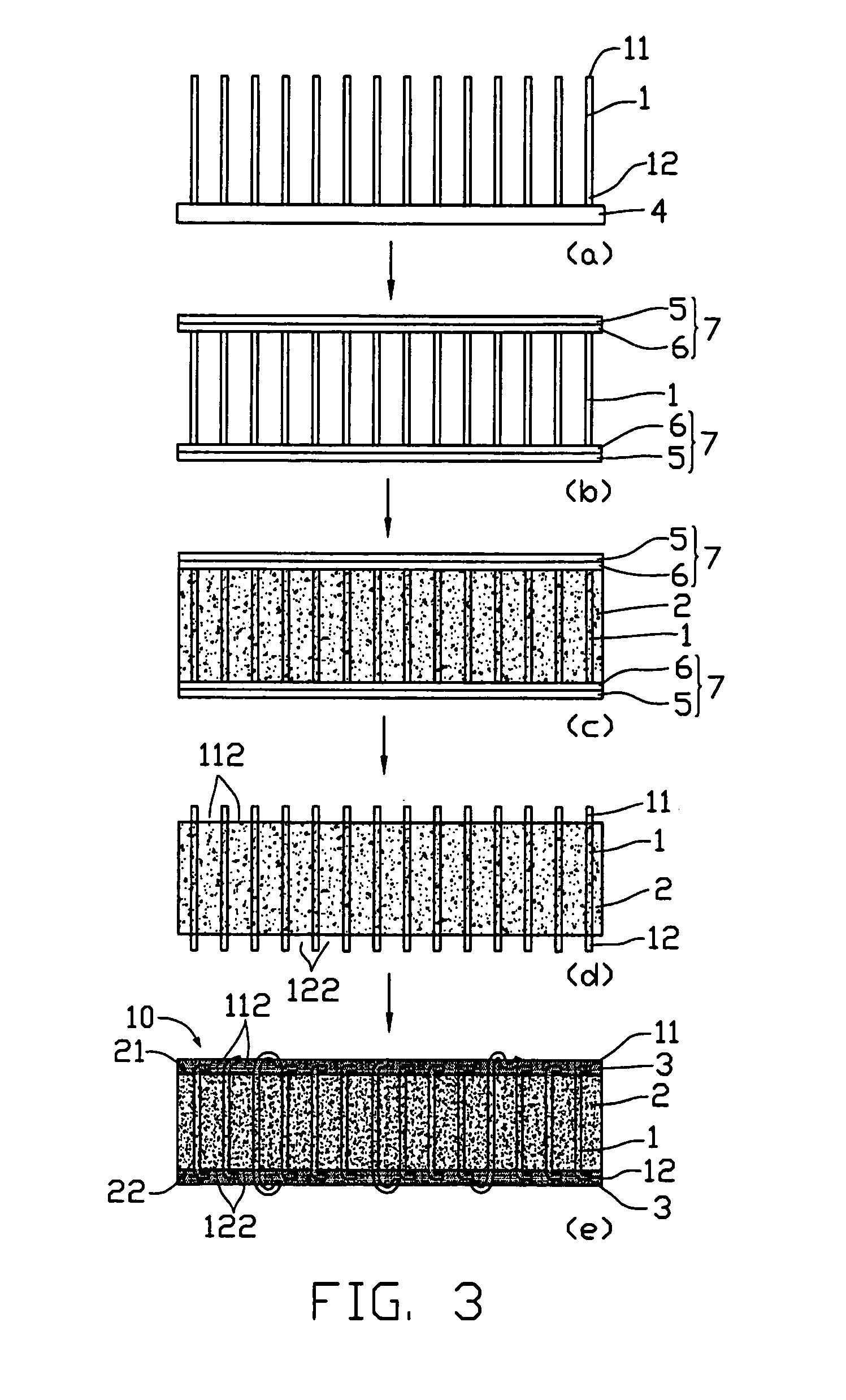Thermal interface material and method for making the same
a technology of thermal interface material and thermal interface material, which is applied in the direction of thin material processing, semiconductor/solid-state device details, semiconductor devices, etc., can solve the problems of inadequate heat dissipation requirements of modem electronic components, the thickness of this kind of thermal interface material is limited to be greater than 40 micrometers, and the heat conduction coefficient of the thermal interface material is now considered too low for many contemporary applications
- Summary
- Abstract
- Description
- Claims
- Application Information
AI Technical Summary
Benefits of technology
Problems solved by technology
Method used
Image
Examples
Embodiment Construction
[0026]Embodiments of the present thermal interface material and related method will now be described in detail below and with reference to the drawings.
[0027]Referring to FIGS. 1 and 2, a thermal interface material (TIM) 10 includes a matrix 2, a plurality of carbon nanotubes (CNTs) 1, and dual phase change layers 3. The matrix 2 has a first surface 21 and an opposite second surface 22. The CNTs 1 are embedded in the matrix 2 uniformly. The CNTs 1 each include a carbon nanotube body submerged into the matrix 2 and two opposite ends, i.e., a first end 11 and an opposite second end 12. The two opposite ends 11 and 12 are exposed out of the first and second surfaces 21, 22 of the matrix 2, respectively. The dual phase change layers 3 are formed on the two ends 11 and 12, respectively.
[0028]The first and second surfaces 21, 22 of the matrix 2 are substantially parallel to one another. The matrix 2 preferably has a thickness in the range from 1 to 1000 micrometers. In the preferred embod...
PUM
| Property | Measurement | Unit |
|---|---|---|
| thickness | aaaaa | aaaaa |
| temperature | aaaaa | aaaaa |
| thickness | aaaaa | aaaaa |
Abstract
Description
Claims
Application Information
 Login to View More
Login to View More - R&D
- Intellectual Property
- Life Sciences
- Materials
- Tech Scout
- Unparalleled Data Quality
- Higher Quality Content
- 60% Fewer Hallucinations
Browse by: Latest US Patents, China's latest patents, Technical Efficacy Thesaurus, Application Domain, Technology Topic, Popular Technical Reports.
© 2025 PatSnap. All rights reserved.Legal|Privacy policy|Modern Slavery Act Transparency Statement|Sitemap|About US| Contact US: help@patsnap.com



